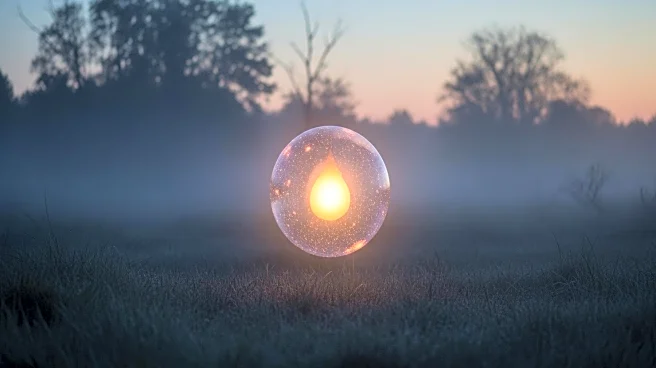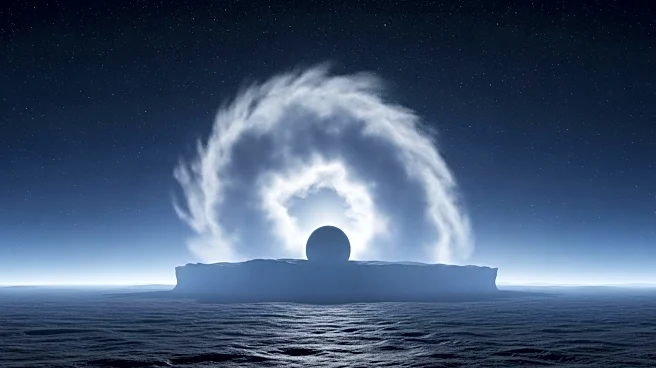What is the story about?
What's Happening?
Researchers at Stanford University, led by Richard Zare, have proposed a new explanation for the mysterious flashes of light known as will-o'-the-wisps, commonly seen in swamps and bogs. These lights have traditionally been associated with supernatural phenomena, but the team suggests they may be caused by the combustion of gases like methane and phosphine, produced by decaying organic matter. The study observed spontaneous electric sparks between bubbles of methane and air in water, termed microlightning, which could ignite methane gas. This discovery challenges the conventional understanding of water's interaction with fire, as water is typically seen as a fire suppressant.
Why It's Important?
The findings from Stanford University could have broader implications for understanding natural phenomena and the chemical processes occurring in wetland environments. By identifying microlightning as a potential ignition source for methane, the research provides insight into the interactions between water and gases, which could influence environmental studies and safety protocols in areas prone to methane emissions. This knowledge may also contribute to the development of new technologies for detecting and managing gas emissions in natural and industrial settings, potentially impacting environmental policy and conservation efforts.
What's Next?
Further research is likely to be conducted to validate the microlightning theory and explore its applications in environmental science. Scientists may investigate other potential ignition sources and study the conditions under which microlightning occurs. This could lead to advancements in monitoring and controlling methane emissions, with implications for climate change mitigation strategies. Additionally, the research may inspire new studies into the electrical properties of water and its interactions with various gases, expanding scientific understanding of natural phenomena.
Beyond the Headlines
The discovery of microlightning challenges traditional perceptions of water and fire, highlighting the complexity of natural processes. This research underscores the importance of interdisciplinary studies in uncovering hidden aspects of the natural world. The findings may also prompt discussions on the role of scientific exploration in debunking myths and enhancing public understanding of environmental phenomena.
AI Generated Content
Do you find this article useful?













